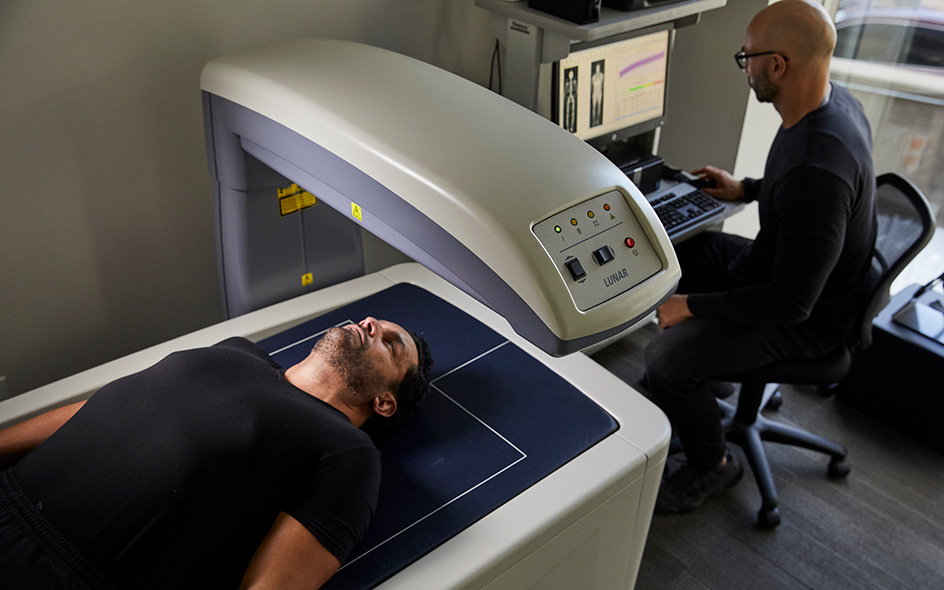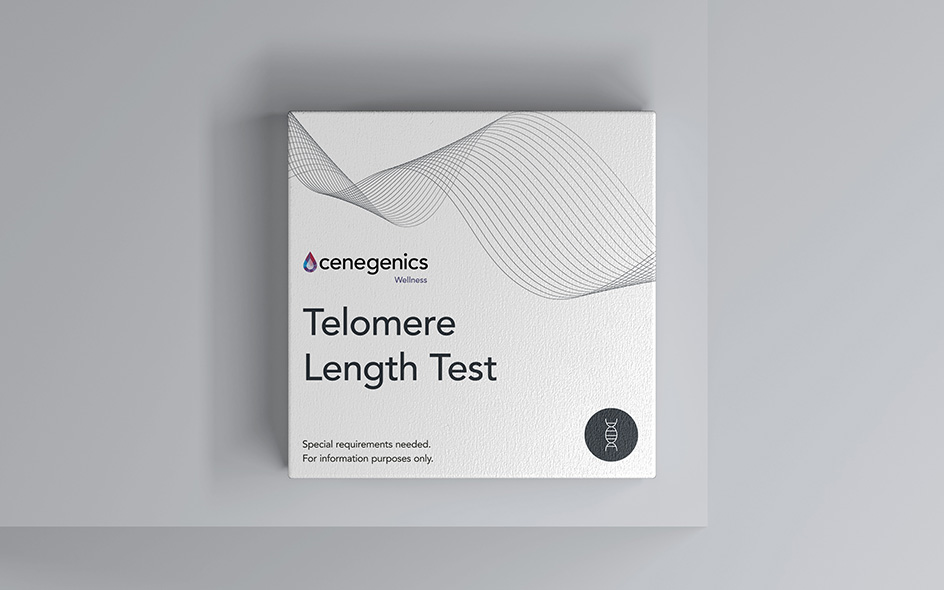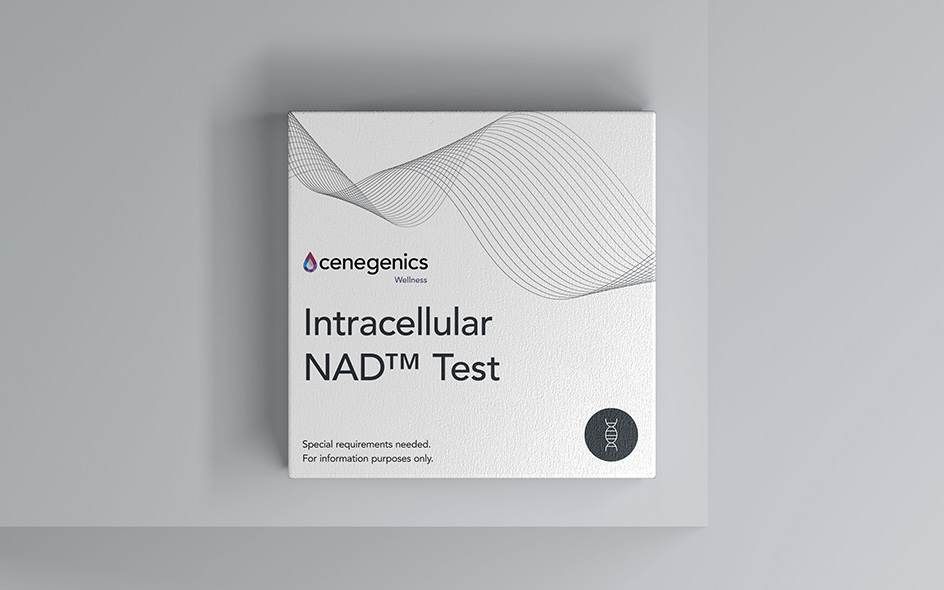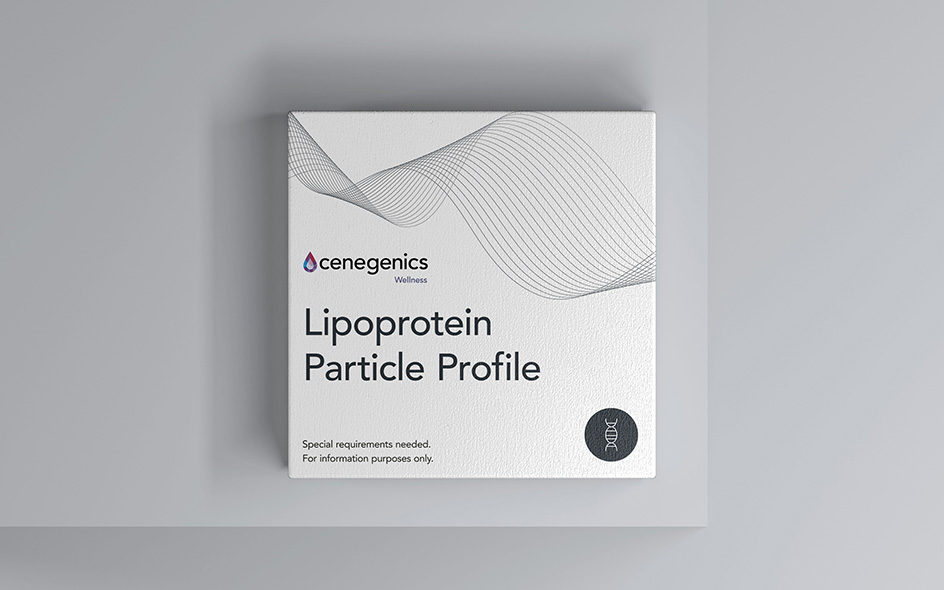01
DEXA Scan
DEXA Scan
The DEXA scanner measures body composition and bone mineral density. The scanning process uses a very low dose of radiation to generate images.
What does a DEXA Scan measure?
Body composition
Measurement of body composition (the proportions of fat and lean tissue, and their distribution).
Bone mineral density
Measurement of total body bone density, bone density of the hips and lumbar spine.
What is the purpose of measuring my body composition with DEXA?
Weight control and body composition.
For those with specific health and fitness goals, DEXA provides information that can be used to optimize diet and training regimens.
Indicator of metabolic syndrome and cardiovascular disease.
DEXAmeasures visceral fat, key information to know the risk of coronary heart disease and diabetes.
Diagnosis and risk of sarcopenia.
Sarcopenia is a widespread and progressive skeletal muscle disorder characterized by reduced muscle mass and strength. DEXA is used to estimate muscle mass and quality to arrive at a diagnosis of sarcopenia [1].
Diagnosis of osteoporosis and risk of fractures.
DEXAallows to know the presence or risk of osteoporosis and fractures, and the follow-up of patients undergoing treatment [2].
02
Test process
What to expect from a DEXA Scan?
Measurements are taken lying face up on a radiology scanning table with your arms at your sides. The imaging arm of the machine will move slowly over your body to obtain the necessary images.
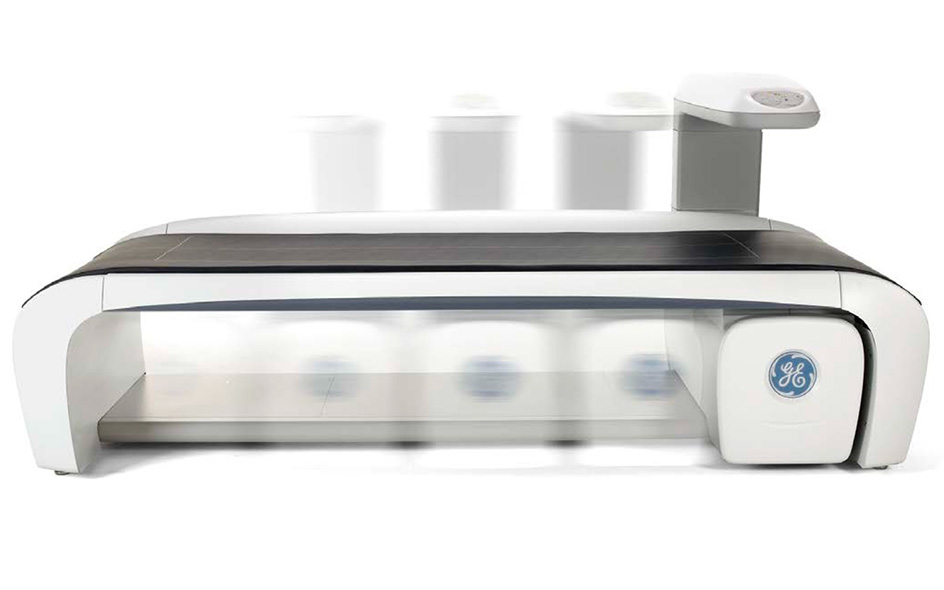
How accurate is the DEXA method?
DEXA - Dual Energy X Ray Absorptiometry, is the reference method for measuring bone mineral density (BMD). The World Health Organization (WHO) has established that DEXA is the best densitometric technique for assessing BMD in postmenopausal women [2].
Thousands of articles and studies support the clinical use of innovative DEXA technology. DEXA systems directly measure and calculate total fat, lean tissue and bone, rather than estimating body composition.
Requirements:
- Preparation: On the day of the procedure you can eat and drink as usual, preferably something light. People taking calcium supplements should stop taking them about 24 hours before the scan.
- Clothing: Comfortable, elastic clothing without metal accessories, including belts or metal buttons.
- Duration: Between 20 - 30 minutes.
- Frequency: We recommend repeating the analysis at least once a year. The ideal frequency depends on the goals and needs of each individual.
- Important considerations: There should be zero chance that a patient is in her first trimester of pregnancy for her scan. We ask all women about their last menstrual period to determine the possibility of pregnancy.
- Age range: From 5 to 90 years old.
03
Results
Results
The value of measuring body composition with DEXA is not limited to identifying risk or treating disease, but can be used to improve health.
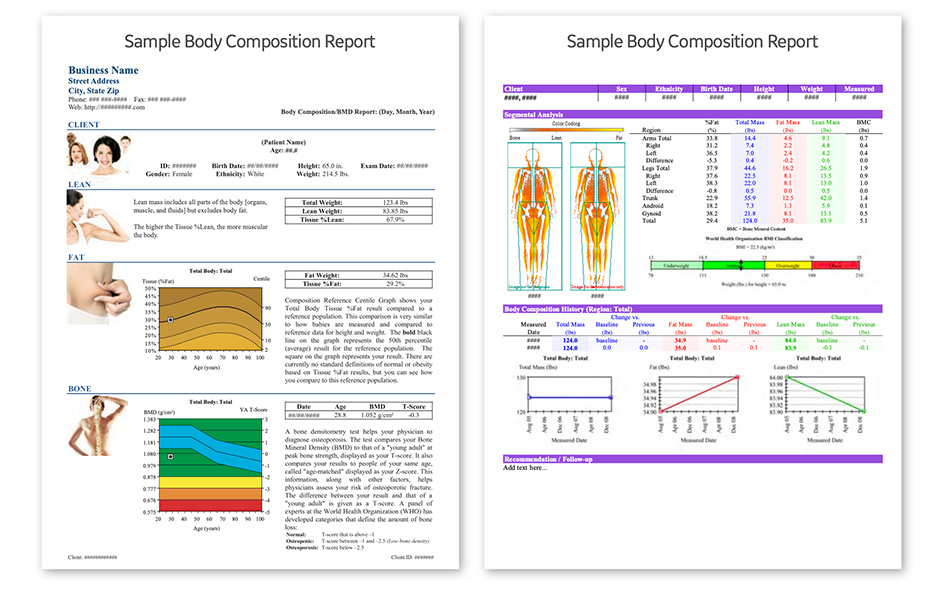
Our Cenegenics Wellness physicians use DEXA measurements to design and adjust personalized health strategies - Performance Health Programs.
What do my bone densitometry results mean?
DEXA scans provide a T-score when measuring osteoporosis. This score compares your bone density to that of a 30-year-old (the age at which bones are strongest).
- T-score greater than or equal to -1.0= Normal bone density
- T-score between -1.0 - -2.5= Low bone density, or osteopenia.
- T-score less than or equal to -2.5= Osteoporosis
What factors affect my body composition?
Gender, age, genetics, nutrition, physical activity and hormonal status are the main determinants of body composition. The environment in which we live and work, family and cultural habits, lack of sleep, stress, as well as certain health conditions, medications, and eating disorders have a significant effect on body composition.
04
Optimal health
How can I improve my body composition?
Conventional scales only measure body weight, which is not a critical indicator of health and does not allow setting clear objectives.
The DEXA scanner is an effective way to monitor our muscle to fat ratio and take care of our bone health.
Increase muscle. Reduce fat. Strengthen bones. We can achieve all this with an accurate monitoring of our body composition, which will help us to make targeted changes with which we can see and feel results.
Article written by: Paulina Alva, Precision Longevity Coach
References
- Chianca, V., Albano, D., Messina, C. et al. (2022) Sarcopenia: imaging assessment and clinical application. Abdom Radiol, 3205-3216. https://doi.org/10.1007/s00261-021-03294-3
- A. El Maghraoui, C. (2008). Roux, DXA scanning in clinical practice, QJM: An International Journal of Medicine, 605-617. https://doi.org/10.1093/qjmed/hcn022



